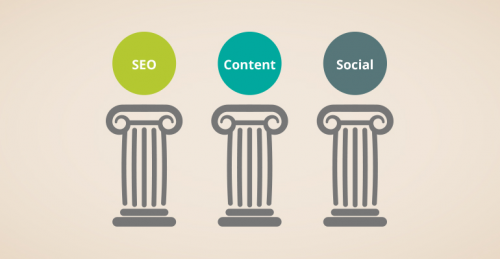A huge part of present-day SEO practices is brand building and influencing search queries themselves, as opposed to starting with a truckload of keywords and creating content around them. Therefore, while links, keywords, content and site optimization remain the building blocks of SEO, the columns on which the edifice is being built are taking on a different appearance. Let’s see what these pillars are.
• Rank Brain
• Accelerated Mobile Pages (AMP)
• The Knowledge Graph and rich answers
Rank Brain
For the past few months, a “very large fraction” of the millions of queries a second that people types into the company’s search engine have been interpreted by an artificial intelligence system, nicknamed RankBrain.”
Rank Brain is an artificial intelligence (AI) program used to help process Google search queries.
RankBrain uses artificial intelligence to embed vast amounts of written language into mathematical entities, called vectors that the computer can understand.
If RankBrain sees a word or phrase it isn’t familiar with, the machine can make a guess as to what words or phrases might have a similar meaning and filter the result accordingly, making it more effective at handling never-before-seen search queries.
According to Google it’s the third most important factor in determining the results that appear in your search queries.
Accelerated Mobile Pages (AMP)
AMP should become part of your mobile content strategy.
The AMP plug-in was born out of collaboration between Google and Twitter.
In simple terms, Accelerated Mobile Pages is an open source initiative project designed to optimize faster mobile pages. It’s like taking a page that’s already mobile friendly and making it load quicker, by stripping it down to basics.
From Search Engine Land, lays out the 3-part structure of AMP:
1. AMP HTML:
A subset of HTML, this markup language has some custom tags and properties and many restrictions. But if you are familiar with regular HTML, you should not have difficulty adapting existing pages to AMP HTML. For more details on how it differs from basic HTML, check out AMP Project’s list of required markup that your AMP HTML page "must" have.
2. AMP JS:
A JavaScript framework for mobile pages. For the most part, it manages resource handling and asynchronous loading. It should be noted that third -party JavaScript is not permitted with AMP.
3. AMP CDN:
An optional Content Delivery Network, it will take your AMP -enabled pages, cache them and automatically make some performance optimizations.
The Knowledge Graph & rich answers
When you search for the answer to a question, or for information on a general subject, Google provides a direct answer in a box that’s separate from the usual list of search results. What’s up with that?
Sometimes, this is a product of the Google Knowledge Graph, a machine learning system that draws in information from all over the Web to a singular, encyclopedia-like archive, which is then funneled into answers to common user queries.
Somewhat related to this are “rich answers" - snippets of information such as short paragraphs, charts, images or recipes that Google pulls from outside sites to answer user queries. If you’re in online marketing, you may be interested to learn that there are ways you can take advantage of these features.
For More SEO Updates Visit Our Website: www.paruloft.com

